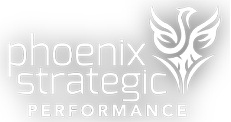Is Your Current Leadership Team Up to the Human Asset Management Task?
The topic of human capital is everywhere today, but how do organizations implement a robust human capital structure and culture, one that goes from talk to action? In our previous blogs, I discussed moving the narrative about human capital to the next level – human asset management. If we do that, we think about employees and, more importantly, managing employees like the dynamic and robust assets they can be. We must consider employees relative to peak performance and productivity, value creation, relevant and future-focused skills, and knowledge upskilling. As leaders, we need to view our employees as continually appreciating assets. This is good for both the employee and the organization.
Human asset management cannot exist organizationally without the critical function called leadership. Only leadership can focus on how employees are upskilled and ready to meet tomorrow's workforce challenges and demands.
If the role of leadership is so critical, let's see if leadership is ready for the task. Here's what the current data reveals:
The CEO View
CEOs were asked to identify the leadership attributes and behaviors most critical to success as a leader. The top five prominent attributes in every region globally were:
- Managing complexity
- Leading change
- Retaining and developing talent
- Leading with integrity
- Having an entrepreneurial mindset
What did CEOs say about their leaders and the reasons for current leadership deficits?
Leaders aren't ready to assume the new and evolving leadership roles due to:
- Lack of investment in continual management and leadership development for the past 15 – 20 years
- Extraordinary, discontinuous change which has profoundly changed the competencies required of the leader
The Readiness of the New VUCA Leader
As we evaluate leaders relative to the evolving VUCA skills (volatility, uncertainty, complexity, and ambiguity), here are the results:
- 25% of organizations report their leaders are not VUCA-capable
- Only 19% identified their leaders as 'very capable.'
- Less than two-thirds of leaders themselves said they were either "highly confident" or "very confident" in their ability to meet the four specific VUCA challenges:
- Volatility - 40% Readiness
- Uncertainty - 32% Readiness
- Complexity - 36% Readiness
- Ambiguity - 31% Readiness
What happens when organizations get their leadership issues right?
- 20% higher than average leadership quality and bench strength
- 28% more critical positions can be filled internally and immediately
- 3 times more likely to outperform other companies on financial metrics
- Organizational consequence:
- Increased organizational agility – the ability to deploy upskilled employees on demand
- Increased business resiliency – the ability to meet and adapt to change
What happens when organizations get their leadership issues wrong?
- 67% lower than average leadership quality and bench strength
- 21% fewer critical positions can be filled immediately
- Organizational consequence
- Compromised organizational agility – inability to deploy upskilled employees on demand
- Decreased business resiliency – inability to meet and adapt to change
Where is your organization's leadership on the Human Asset Management continuum?
To find out more about an alternative method to evaluate the issues of human asset management, we invite you to watch Part 3 of our video series: "The Impact of Human Capital on Your Organization," or you can also schedule a complimentary assessment with a member of our team.





